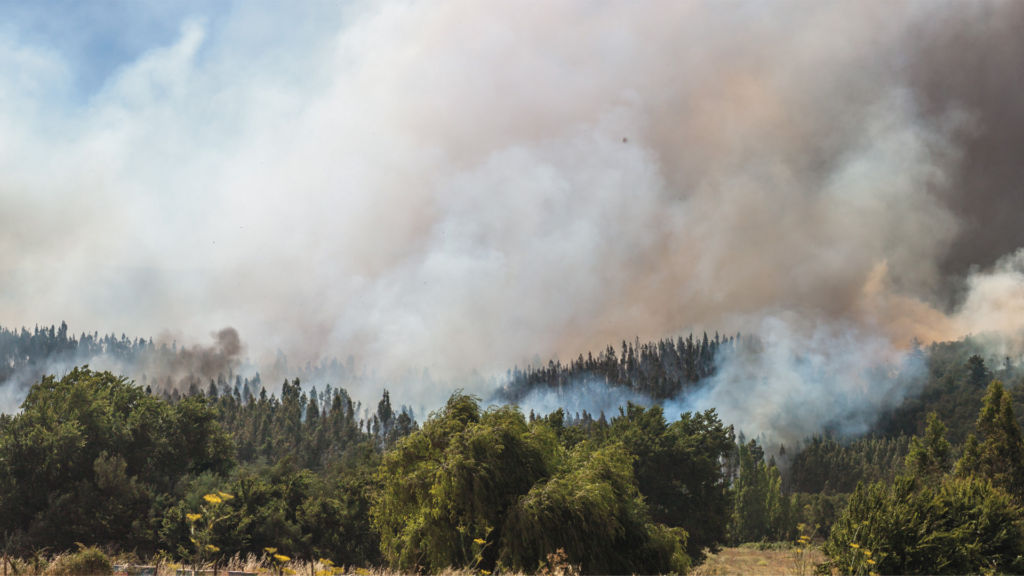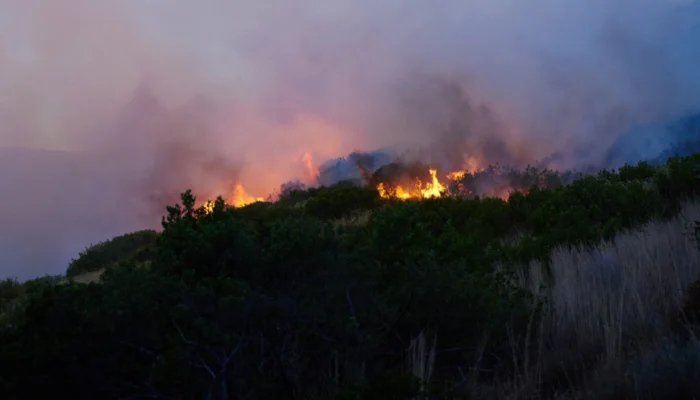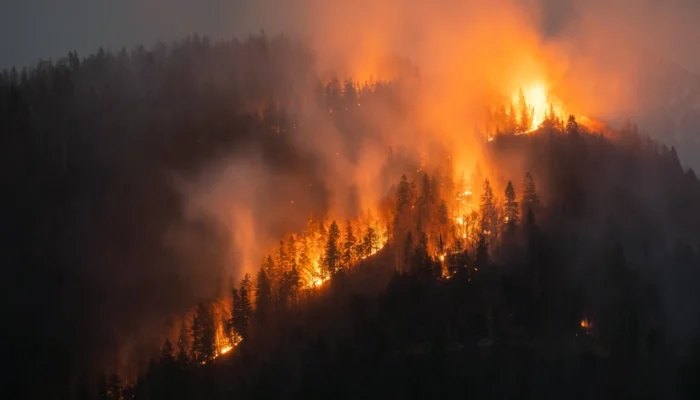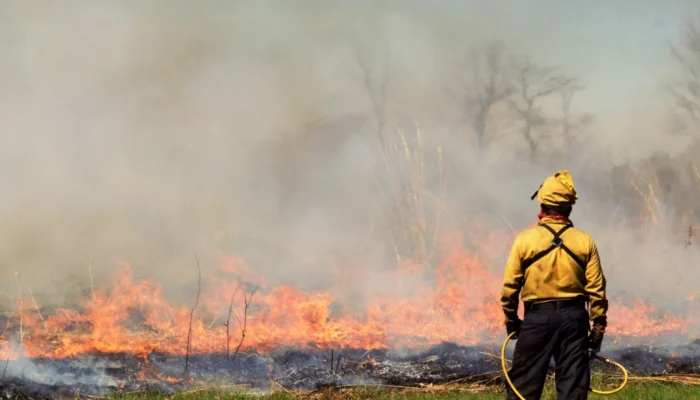There is no smoke without fire, and understanding the fire smoke color meaning is crucial for effective fire detection. Therefore, most fire detection systems are based on smoke detection. Thanks to thermal convection caused by the heat of the fire, visible combustion products are carried upwards. Emerging above the treetops, they become visible to our cameras. Both the light and dark shades of the smoke contrasts with the green vegetation, and the its flow caused by the movement of air masses, determines the possibility of detecting a fire already in its early stages.
Further observation of smoke from a detected wildfire provides important information for a better understanding of fire behavior in real-time. Essentially, the shape and color of the smoke provide clues that can help understand burning conditions. This should be particularly crucial for those responsible for deploying first responders. Reading the smoke can inform a firefighter about what is currently happening with the fire and what might unfold in the future.
One of the particularly important factors in predicting the course of a fire is the color of the emitted smoke. The color of visible combustion products depends on the ratio between water vapor and soot. This allows for establishing initial assumptions for firefighting strategies based on the current and its expected progression.
⚡ Not every smoke means wildfire – Not every smoke plume rising in the landscape over undeveloped areas means a wildfire. It could just as well be smoke from controlled burns, which paradoxically are a crucial tool in preventing catastrophic fires and protecting our ecosystems.
Determining the type and intensity of fire based on the color and nature of the smoke:
White: Thick, billowing white smoke indicates high humidity in the vegetation, e.g. when the fire has recently occurred after rainfall. Slow, dissipating smoke (initially dense but quickly thinning) signifies that the fuel material is releasing moisture and water vapor, meaning the fire is just beginning to consume the material, indicating an early heating phase. White smoke may also indicate fast-burning fine/light fuels such as grass or pine needles. Light, whitish smoke rising above the ground is also characteristic of peat fires, where the smoke visibility increases significantly in the evening or the next morning when the air temperature reaches dew point.
Light gray: The color of the combustion products in surface fires is light gray. This color is determined by low burning intensity and an excess of air (oxygen). The light color of smoke is caused by the ratio of water vapor to unburned carbon particles (soot). Such a cloud does not have a large height and size because the solid particles disperse and water vapor contributes to replenishing the air’s humidity deficiency, becoming less visible (dispersing). Homogeneous smoke stretched over the fire area.
Dark gray: Pulsating release of dark gray smoke at the fire front or billowing dark gray smoke is associated with low fuel moisture and/or intensification of the combustion process. The color of the smoke is determined by the higher intensity of the process. Due to the rapid consumption of oxygen, its previous excess decreases rapidly. This leads to incomplete combustion of carbon. Heated combustion products in the form of soot and water vapor rise up in the form of dark plume. The dark gray color of the smoke indicates the possibility of increasing intensity of fire progression if the smoke columns tilt.
Black: Black smoke is associated with very dry fuel and big fire intensity. it may take on a coppery hue. It appears during crown fires. Hotter fires tend to convert more fuel into carbon, which breaks down into small light-absorbing particles, resulting in the appearance of black plume in the sky. The thick column of smoke is distinctly formed and can reach significant sizes. Often, the smoke movement in the column has a spiral pattern. Black smoke in smaller fires can also be a sign of incomplete combustion, burning of highly resinous wood, or burning trash (e.g., car tires).
The relationship between the color of smoke, fuel moisture and burn intensity

Blue and Orange: Smoke can also take on other different shades depending on the background against which it is observed. Smoke seen against the backdrop of a dark green forest will appear blue. This happens due to the way light interacts with smoke particles, which reflect light from every place except the background behind them (where light does not fall). However, if we observe the same smoke from the ground against the background of a light blue sky, it will no longer be blue – quite the opposite, it often takes on an orange hue. This occurs because smoke particles now reflect light in all directions (there is no background absorption). The light blue background also overwhelms any blue reflections in the scattering pattern. Then our eyes perceive yellow and red hues most strongly.
The above signs of reading smoke are great tools, but they do not cover everything. However, it is important to remember that smoke color is only one clue in a number of indicators used to predict fire behavior and should be considered in a broader context as one of the sources of related information.




